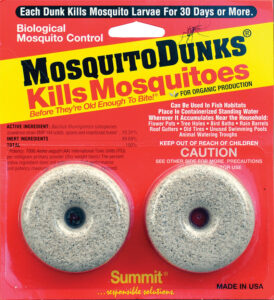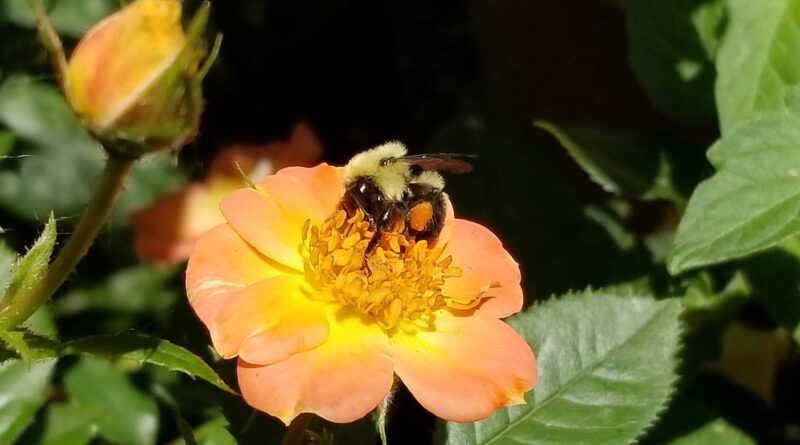Insect Apocalypse on Main Street?
Podcast: Play in new window | Download (Duration: 1:34:40 — 42.7MB)
Subscribe: Apple Podcasts | Spotify | Android | iHeartRadio | Podchaser | Email | TuneIn | RSS | More
(June 21, 2020) You can call it the Insect Apocalypse-Extinct-Ageddon. Or you can simply call it biodiversity decline. In either case, we’re in a world of hurt–and definitely fewer species of everything–as we lurch into the middle of the 21st century. This is something we discussed on our show as recently as November of last year.
Skip to a specific segment in this podcast.
2:47 Bill Stengel from Summit Responsible Solutions
25:46 Jim Elliott and Tinamarie Hernandez of Diveheart
48:00 Dr. May Berenbaum
1:26:34 Meteorologist Rick DiMaio
At that time, I wrote about a piece in Undark.
They were critical of the science and media’s coverage of the science surrounding “insectageddon.”
The story the media often misses is far more complex — and in some ways more dire — than the sensationalist fodder they frequently prefer to peddle. While the studies behind the Insectageddon story don’t provide evidence that all six-legged life on Earth is doomed, Saunders said, they do provide a window on how humans can impact biodiversity more generally.
A story in The Atlantic offers a similar perspective.
Which brings us to the monarch butterfly. We have covered the plight of Danaus plexippus on many shows. We have watch the numbers drop precipitously and then bounce back. Is this iconic species still in danger? We probably won’t know for awhile.
The point is that scientists are still grappling with species decline. Does it exists? Do we know how to measure it? If it is real, how can we reverse the trend? What does it mean to lose 40% of certain kinds of insects in one part of the world or on the whole planet? How should the media report on it?
Whether or not you believe we’re in the middle of the Sixth Mass Extinction, or an insect apocalypse, something is going on. It is tied to population, habitat loss, pesticide and other chemical use, agricultural development, and climate change, not necessarily in that order.
Pollinators are only one subset of the many different animals (and plants) that are disappearing. But June 22-28 is National Pollinator Week. So I went to the Pollinator Partnership and saw the name May Berenbaum, Ph.D. at the top of the list of science advisors. Dr. Berenbaum has been on this show several times, but not recently. I held my breath, called her office and…she picked up! Sometimes, chance is on your side. Dr. Berenbaum has been on the faculty of the Department of Entomology at the University of Illinois at Urbana-Champaign since 1980, serving as head since 1992 and as Swanlund Chair of Entomology since 1996.
And sometimes, as I learned, chance even drops a surprise in your lap. The day before I spoke to her, she had done an online presentation for 300 Illinois Master Naturalists. Its title was “Is There a Pollinator-Apocalypse?” Bingo. Here’s Dr. Berenbaum’s abstract for her talk.
With more than a million described species, the Class Insecta is most species-rich group of multicellular organisms on Earth; insects can be found in virtually all habitats on the planet. Several recent studies have documented dramatic declines in local insect biomass and species numbers, suggesting that the spectacular diversity of insects that has characterized life on Earth for millions of years might be at risk. The magnitude of declines is open to debate, as are the possible causes, among the many candidates of which are habitat loss, intensification of agriculture, invasive species, and climate change. Among the irreplaceable ecosystem services provided by many insects is pollination of flowering plants, more than 75% percent of which depend on insects in order to reproduce. Some of the most conspicuous and well-documented declines in diversity and abundance involve pollinating bees, flower flies, moths, and butterflies. Protecting pollinators, however, has only recently become a priority. Whether people can be persuaded to watch out for the pollinators on which 3/4 of the world’s flowering plants and one-third of the world’s crop plants is a challenge that should supersede the differences that usually divide them.
I haven’t seen the video, but Dr. Berenbaum sent me her slide show. There are 92 slides, each of which could take 20 minutes to explain. That’s a scientist for you.
She doesn’t really come to the conclusion that we are in the middle of a pollinator or an insect apocalypse. But that’s also something I expect from a scientist. As she states in the talk, many of the studies were done in specific areas using specific species. As a scientist, she wants more information and better methodology. Scientists understand that generalizing with limited data is not science at all. In that regard, she echoes the journalists I quoted earlier in this blog post.
 Her talk isn’t exactly new. She has been spreading the gospel of insect awareness for her entire career. For that, Dr. Berenbaum received the National Medal of Science in a White House ceremony in 2014. That’s the photo on the right. And she has some very practical advice for the average home owner.
Her talk isn’t exactly new. She has been spreading the gospel of insect awareness for her entire career. For that, Dr. Berenbaum received the National Medal of Science in a White House ceremony in 2014. That’s the photo on the right. And she has some very practical advice for the average home owner.
“Get rid of your lawns,” she said. “Lawns are total biological deserts. It’s just grass with pesticides. The way it’s grown does not support a lot of biodiversity.”
Instead, plant native flowers that provide nectar and pollen for pollinators, Berenbaum said.
Another tip: Leave leaf litter in place. The dead plant material is an important part of healthy soil and offers protection for insects during the winter, Berenbaum said.
Also, don’t use bug zappers, which Berenbaum said do not work in killing mosquitoes but do kill hundreds of beneficial species.
In other words, would it kill you to show a little respect for insects? I can assure her that’s the very thing we do on this program.
Speaking of insect apocalypse…
We just learned that we’re embarking on National Pollinator Week. But roughly the same seven day period is also National Mosquito Control Awareness Week. Notice that nobody is trying to “control” pollinators. But mosquitoes are pollinators, too, so what gives? Yes, we know that mosquitoes are often considered “the most dangerous animal on earth.” Bill Gates seems to think so.
What makes mosquitoes so dangerous? Despite their innocuous-sounding name—Spanish for “little fly”—they carry devastating diseases. The worst is malaria, which kills more than 600,000 people every year; another 200 million cases incapacitate people for days at a time. It threatens half of the world’s population and causes billions of dollars in lost productivity annually. Other mosquito-borne diseases include dengue fever, yellow fever, and encephalitis.
But before we get to how to control mosquitoes, let’s remember that, like all animals on this planet, they serve a purpose, too.
Mosquito larvae are aquatic insects and, as such, play an important role in the aquatic food chain. According to Dr. Gilbert Waldbauer in “The Handy Bug Answer Book,” Mosquito larvae are filter feeders that strain tiny organic particles such as unicellular algae from the water and convert them to the tissues of their own bodies, which are, in turn, eaten by fish. Mosquito larvae are, in essence, nutrient-packed snacks for fish and other aquatic animals.
In addition, while species of mosquitoes eat the carcasses of insects that drown in the water, the mosquito larvae feed on the waste products, making nutrients such as nitrogen available for the plant community to thrive. Thus, the elimination of those mosquitoes might affect plant growth in those areas.
A mosquito’s role on the bottom of the food chain does not end at the larval stage. As adults, mosquitoes serve as equally nutritious meals for birds, bats, and spiders.
And they are pollinators, too. Of course, none of that is going to stop you from smacking a mosquito the next time it lands on your arm. But it’s important, as we mentioned in our discussion about the insect apocalypse, to remember that science is science. But let’s move on to today’s show.
Bill Stengel from Summit Responsible Solutions joins us once again. (In full disclosure, they are a sponsor of The Mike Nowak Show with Peggy Malecki.) He was with us in 2019 to talk about the best ways to keep yourself safe from mosquito bites and possible transmission of diseases. At the time, I wrote about a post by the late, great Midwest Pesticide Action Center.
According to the U.S. Centers for Disease Control and Prevention, and the American Mosquito Control Association, the airborne spraying of pesticides, commonly called mosquito ‘fogging’, to kill adult mosquitoes is the least effective method to control mosquito populations. Fogging usually consists of spraying or fogging pesticides from the back of a truck or plane.
This method is ineffective because the pesticide only kills those mosquitoes flying in the spray; mosquitoes behind buildings or under vegetation are not affected. Airborne pesticides are particularly harmful as they may be easily ingested by humans and wildlife. Pesticide residue can also be left behind on items kept outdoors, such as children’s toys and outdoor furniture, or tracked inside on shoes. Since fogging also kills insects that eat mosquitoes, it can cause future population booms for local mosquitoes.
In the year of COVID-19, Stengel is back. He says that for Summit, this has been a very busy spring. It’s due in no small part to many people staying home, resulting in more backyard maintenance and improvement. That has led to more outdoor garden and yard related sales. Go figure.
 Summit is best known for Mosquito Dunks® and Mosquito Bits®. They are the flagship items and mosquito control is what the company is best known for. The active ingredient in the dunks and bits is Bacillus thuringiensis subspecies israelensis, or Bti. This is about as safe a product for insect control as you can get, according to the EPA.
Summit is best known for Mosquito Dunks® and Mosquito Bits®. They are the flagship items and mosquito control is what the company is best known for. The active ingredient in the dunks and bits is Bacillus thuringiensis subspecies israelensis, or Bti. This is about as safe a product for insect control as you can get, according to the EPA.
Studies indicate Bti has minimal toxicity to honey bees. Bti produces toxins that specifically affect the larvae of only mosquitoes, black flies and fungus gnats. These toxins do not affect other types of insects including honey bees.
It has no effect on humans, either. Stengel says that ticks are also a problem that the company is addressing.
For 2 years now we have been selling a backyard Tick & Flea spray, that is formulated for maximum control of ticks. There are many backyard insect sprays that consumers can choose and what we found was that most of them are very good at general insect control, but with ticks (which are not really true insects but are parasitic arachnids) you need an acaricide – a product that is really lethal to ticks. There are recommendations on how best to keep your yard tick free and part of that is the proper timing of applying Tick & Flea spray along with keeping your grass cut short, providing a physical barrier of stone or mulch between the yard and any wooded areas close by, and discouraging deer from entering the yard. These strategies can reduce tick populations in the yard over 90%.
The active ingredient in the tick and flea products is permethrin. Here’s what the National Pesticide Information Center has to say about that chemical.
Permethrin is an insecticide in the pyrethroid family. Pyrethroids are synthetic chemicals that act like natural extracts from the chrysanthemum flower. Permethrin is used in a number of ways to control insects. Products containing permethrin may be used in public health mosquito control programs. They may be used on food and feed crops, on ornamental lawns, on livestock and pets, in structures and buildings, and on clothing. Permethrin may also be used in places where food is handled, such as restaurants. Permethrin was first registered with the United States Environmental Protection Agency (U.S. EPA) in 1979, and was re-registered in 2006.
I urge you to read more if you have concerns. Stengel says that a couple of products are in the pipeline.
Not available until next year, Summit is introducing Mosquito Dunk Chunks®, a convenient form of Mosquito Dunks® that are perfect for treating small areas of standing water such as birdbaths, rain barrels, stock tanks, tree holes, small ponds, and the reservoirs in self watering planters such as Earth Box. Just like Mosquito Dunks, the treat water for at least 30 days, are 100% effective in killing mosquito larvae, and of course are harmless to people, plants, pets, beneficial insects, etc.
We are also introducing a fabulous pet or personal tick removal tool called Tick*Take®. Tick*Take® is so simple and easy to use that everyone will want to have one when they are working in the garden, or hiking, or playing with the dog. It can remove attached or crawling ticks of any size and the tick can be bagged for disease testing or dropped in alcohol, all without touching the tick.
Bill Stengel from Summit Responsible Solutions talks with us on the show today.
Rescuing lives through scuba diving
A long time ago, in a radio galaxy far, far away, I worked for a Death Star known as Gargantua Radio. The halls were littered with $20 bills and billions of people listened to every word that was spoken there. Some listeners had the frequency chip implanted in their brains so they could permanently hear the station without an actual device. Nobody who worked there was ever fired and every employee–even interns–automatically and immediately went into the Radio Hall of Fame.
Okay, some of that isn’t exactly true. It’s what I kind of remember, so sue me.
But I did meet some pretty cool people. One of them was a guy named Jim Elliott, who in 1996 bailed on Radio Nirvana to help people. He became a full-time volunteer and began teaching individuals with disabilities how to scuba dive. Whaa? Five years later, in 2001, he founded Diveheart, a volunteer-driven organization focused on building confidence and independence in disabled children, adults and veterans through scuba diving.
 Then, just before the COVID-19 pandemic hit, I ran into Elliott again, and we agreed that he needed to be on my radio show. Not that he needs the publicity. His organization has been featured on local outlets like ABC7Chicago, WGNTV, and TEDx Naperville, as well as CNN, NBC, Money Magazine, Huffington Post, and more.
Then, just before the COVID-19 pandemic hit, I ran into Elliott again, and we agreed that he needed to be on my radio show. Not that he needs the publicity. His organization has been featured on local outlets like ABC7Chicago, WGNTV, and TEDx Naperville, as well as CNN, NBC, Money Magazine, Huffington Post, and more.
Here’s how Diveheart describes its purpose.
Diveheart is a nonprofit tax-exempt 501(c)(3) organization. The purpose of Diveheart is to provide and support educational scuba diving programs that are open to any child, adult or veteran with a disability, with the hope of providing both physical and psychological therapeutic value to that person.
We’ve discovered the forgiving, weightless wonder of the water column provides the perfect gravity-free environment for those who might otherwise struggle on land. Underwater, we’re all equal.
Diveheart works with individuals who have a variety of disabilities, including physical and developmental disabilities, vision and hearing impairments, amputations, traumatic brain injuries, Post Traumatic Stress Disorder and more. Diveheart seeks to help its participants “Imagine the Possibilities” in their lives.
Founder Jim Elliott and Executive Director Tinamarie Hernandez join us this morning.

